Some animals don’t just surprise you—they completely wreck your sense of scale.
You think you know how big a rabbit gets—until you meet one the size of a cocker spaniel.
You expect a frog to fit in your palm—not stretch across your forearm like a sci-fi monster.
And don’t even get started on cows that look like something out of a Jurassic Park reboot.
These creatures aren’t just large.
They’re giants hiding in plain sight.
From fluffy beasts to scaly legends, every one of them looks like nature pressed the “enlarge” button and didn’t stop.
Ready to meet the oversized stars of the animal kingdom?
Let’s take a look at 19 super-sized animals that are way, way bigger than you’d ever guess.
African Elephant
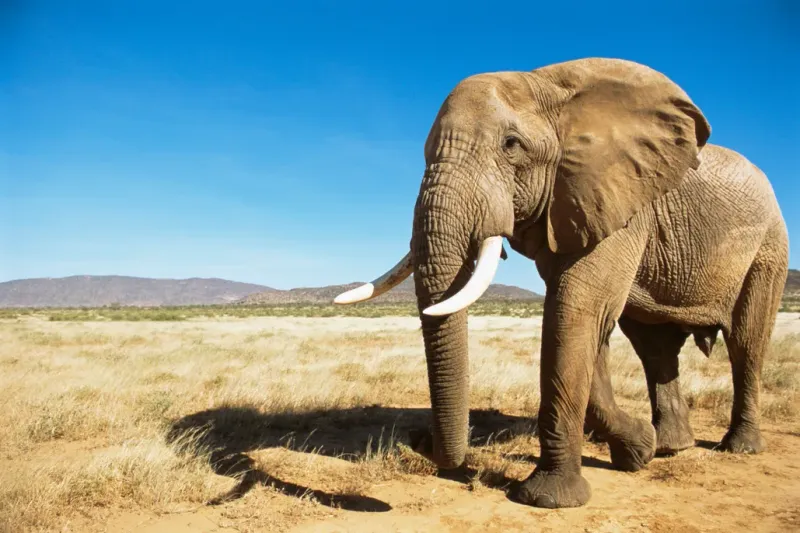
The African Elephant is the largest land animal on Earth, with males often reaching up to 13 feet tall at the shoulder and weighing as much as 14,000 pounds. Their enormous ears and long trunks are not just for show; they serve to regulate body temperature and assist in gathering food and water.
Despite their size, these gentle giants are known for their social nature, living in matriarchal herds. The elephant’s sheer size and power command respect, yet their intelligence and emotional depth make them one of the most fascinating creatures on the planet.
Whale Shark
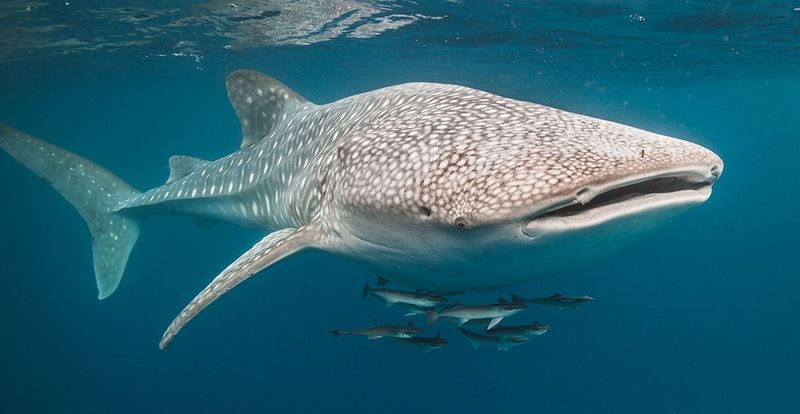
Whale Sharks are the largest fish in the sea, measuring up to 40 feet long or more. These gentle behemoths graze the ocean’s surface for plankton, small fish, and squid, filtering thousands of gallons of water through their gills every day.
Despite their intimidating size, Whale Sharks are harmless to humans, often interacting playfully with divers. Their unique spotted pattern is as distinctive as a fingerprint, making each whale shark truly one-of-a-kind. This majestic sea creature inspires awe and curiosity, bringing attention to the rich diversity of marine life.
Saltwater Crocodile
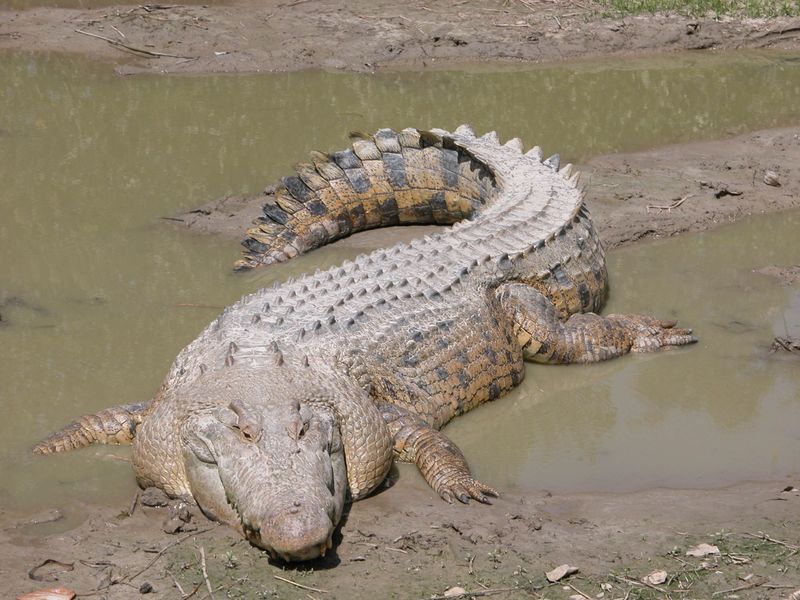
The Saltwater Crocodile is the largest living reptile, capable of growing over 23 feet long and weighing more than a ton. Known for their formidable power and stealth, these ancient creatures are apex predators in their habitats.
Their robust physique and strong jaws make them highly efficient hunters, often taking down prey much larger than themselves. While they can be dangerous, these crocodiles play a crucial role in the ecosystem, maintaining the balance of their aquatic environments. Their presence is a testament to the enduring legacy of prehistoric giants.
Giraffe

With legs and necks that seem to stretch to the heavens, Giraffes are the tallest land animals, reaching heights of up to 18 feet. Their unique appearance allows them to browse foliage at heights inaccessible to other herbivores.
This remarkable adaptation not only provides them with a competitive advantage but also contributes significantly to maintaining ecological balance. Giraffes’ patterned coats are both beautiful and functional, serving as camouflage. These gentle giants are a symbol of the African wilderness, embodying grace and beauty in their towering stature.
Kodiak Bear
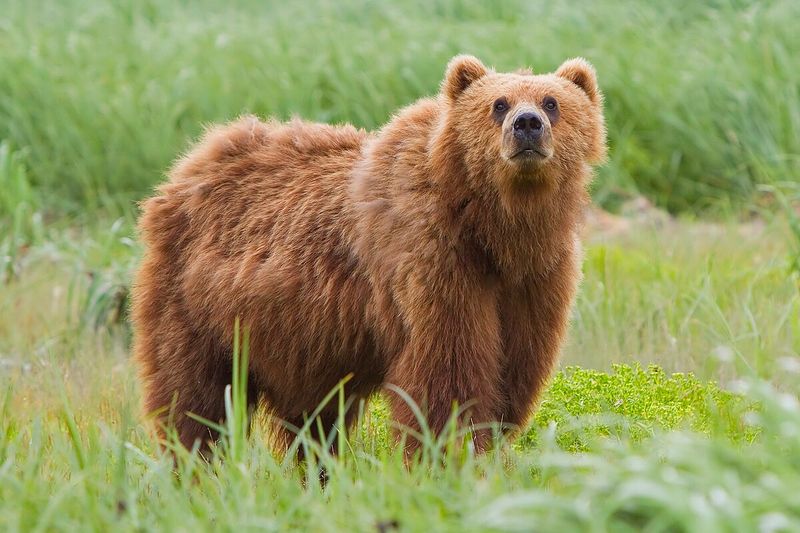
Kodiak Bears are among the largest bears on the planet, with adult males weighing up to 1,500 pounds. Found exclusively in the Kodiak Archipelago in Alaska, their massive size is a result of abundant food sources and genetic adaptation.
These bears are solitary by nature, known for their strength and adaptability. Their thick fur and layer of fat protect them from the cold, allowing them to thrive in harsh climates. The Kodiak Bear is a symbol of wilderness and raw power, capturing the imagination with its awe-inspiring presence.
Giant Squid
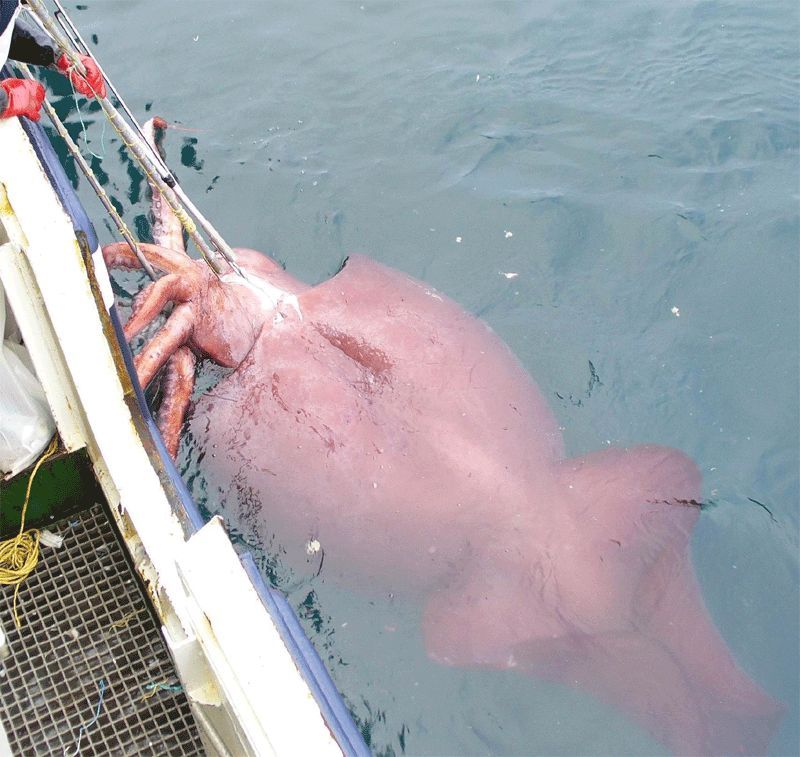
The elusive Giant Squid inhabits the deep ocean, rarely seen by humans, yet capable of growing up to 43 feet long. These enigmatic creatures have long fueled maritime legends with their massive size and mysterious lives.
Equipped with large eyes, they are adept at spotting prey in the dark ocean depths. Their long tentacles, armed with powerful suckers, are capable of capturing prey with precision. The Giant Squid remains one of the ocean’s great mysteries, sparking curiosity and wonder with its colossal form and elusive nature.
Blue Whale
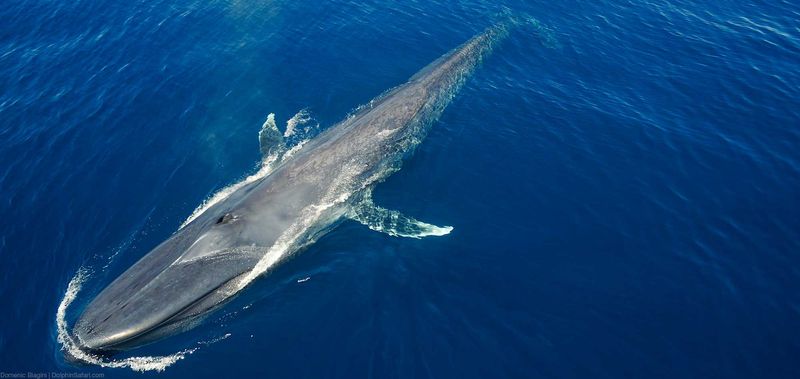
The Blue Whale holds the title of the largest animal on Earth, with lengths reaching up to 100 feet and weights up to 200 tons. Despite their massive size, they primarily consume tiny krill, showcasing one of nature’s fascinating contrasts.
Their haunting calls resonate across the oceans, a testament to their communication skills. Blue Whales are essential to the marine ecosystem, contributing to the health of the ocean through their feeding and movement. Their sheer size and grace symbolize the vastness and mystery of the ocean’s depths.
Bison
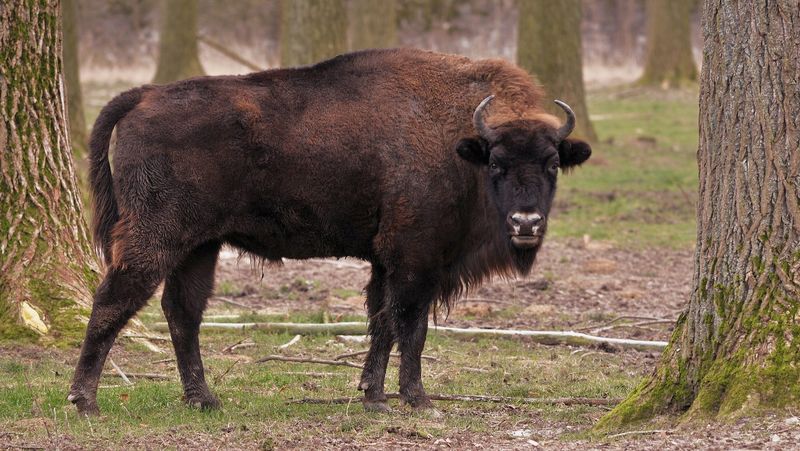
The Bison, with its shaggy coat and formidable frame, is a symbol of the North American plains. These majestic creatures can weigh over a ton and stand up to 6 feet tall at the shoulder.
Bison are known for their resilience and have played a crucial role in the cultures and ecosystems of their native habitats. Their grazing patterns help maintain grassland health, supporting countless other species. Once nearly driven to extinction, conservation efforts have helped restore bison populations, highlighting the strength and perseverance of this iconic species.
Ostrich
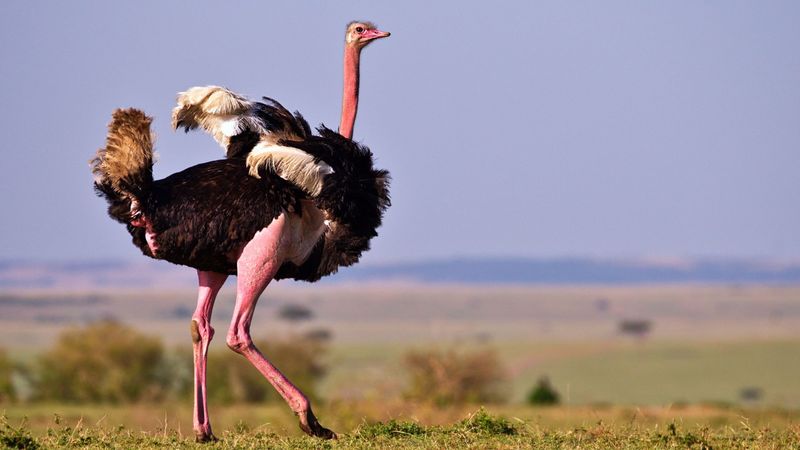
The Ostrich is the largest living bird, known for its impressive height of up to 9 feet and its ability to sprint at speeds up to 45 miles per hour. Despite being flightless, their powerful legs allow for swift and agile movement.
Ostriches are equipped with keen eyesight, helping them detect predators from afar. Their large size and speed offer protection, making them formidable inhabitants of the African plains. Ostriches are not only a marvel of evolution but also an integral part of their ecosystem, contributing to seed dispersal and plant life sustenance.
Japanese Spider Crab

The Japanese Spider Crab holds the record for the largest leg span of any arthropod, stretching up to 12 feet from claw to claw. Found in the deep waters off the coast of Japan, these crabs are fascinating and eerie in appearance.
Their notably long legs are adapted for navigating the ocean floor, while their tough exoskeleton offers protection from predators. Despite their intimidating look, they are generally scavengers, playing a vital role in the marine ecosystem by consuming detritus. The Spider Crab’s extraordinary size captivates those lucky enough to encounter it.
Anaconda
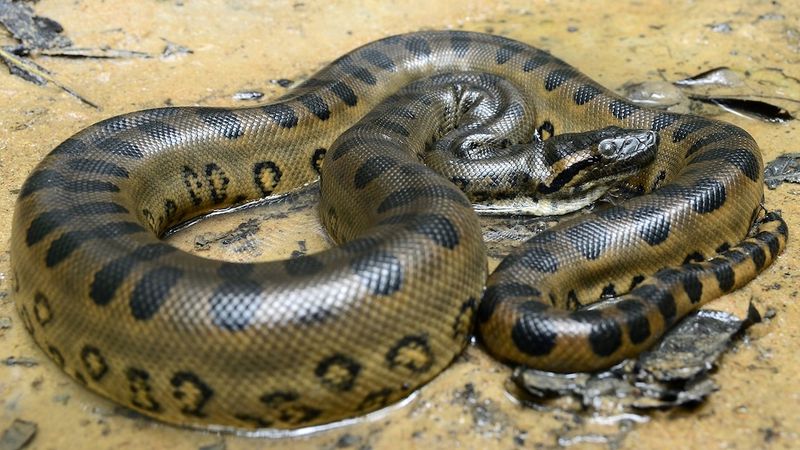
The Anaconda, native to the rivers and swamps of the Amazon, is among the largest snakes in the world, with some exceeding 30 feet in length. Its robust body and strength make it an apex predator in its habitat.
Although non-venomous, anacondas are powerful constrictors, capable of subduing large prey through sheer force. Their aquatic nature allows them to move effortlessly through water, while their cryptic coloration provides excellent camouflage. The Anaconda’s sheer size and stealth make it a mesmerizing and formidable presence in the rainforest.
Hippopotamus
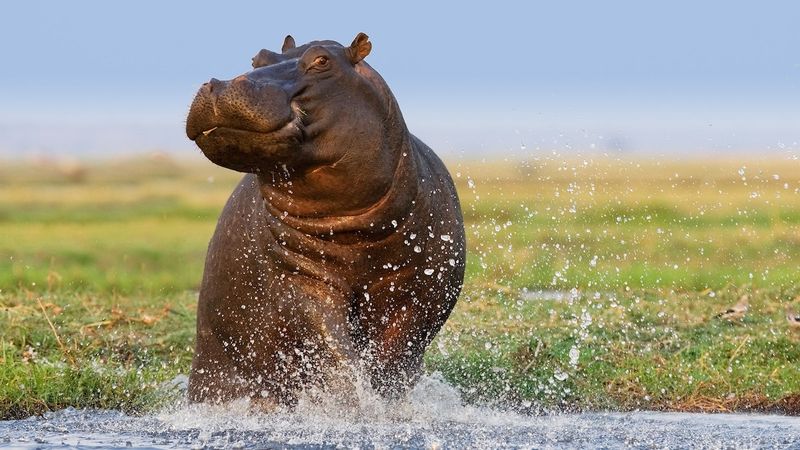
The Hippopotamus is a heavyweight of the animal kingdom, tipping scales at over 3,000 pounds. Despite their bulky frame, they are surprisingly agile in water, thanks to their buoyant bodies and webbed feet.
Hippos spend much of their time submerged, surfacing only to breathe, which contributes to their semi-aquatic lifestyle. Their formidable size and temperament make them both fascinating and dangerous. Hippos play a crucial role in their ecosystem, influencing the vegetation and water quality of their habitats. Their presence is a reminder of the diversity and complexity of life on Earth.
Moose
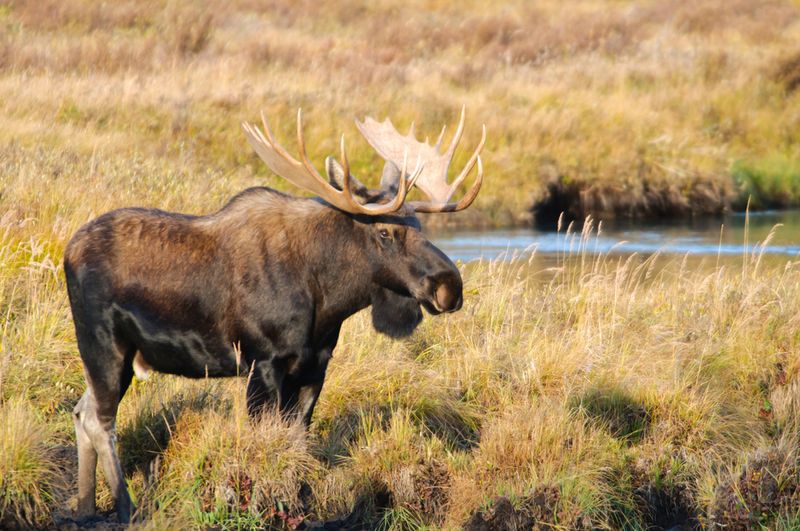
The Moose is the largest species in the deer family, with males often weighing over 1,500 pounds and standing more than 6 feet tall at the shoulder. Their impressive antlers, which can span up to 6 feet across, make them a striking sight in their native woodlands.
Moose are solitary creatures, known for their strength and endurance, capable of surviving harsh winters and deep snow. Their diet consists mainly of leaves, twigs, and aquatic plants. The Moose’s majestic presence and adaptability are a testament to nature’s ingenuity and resilience.
Gaur
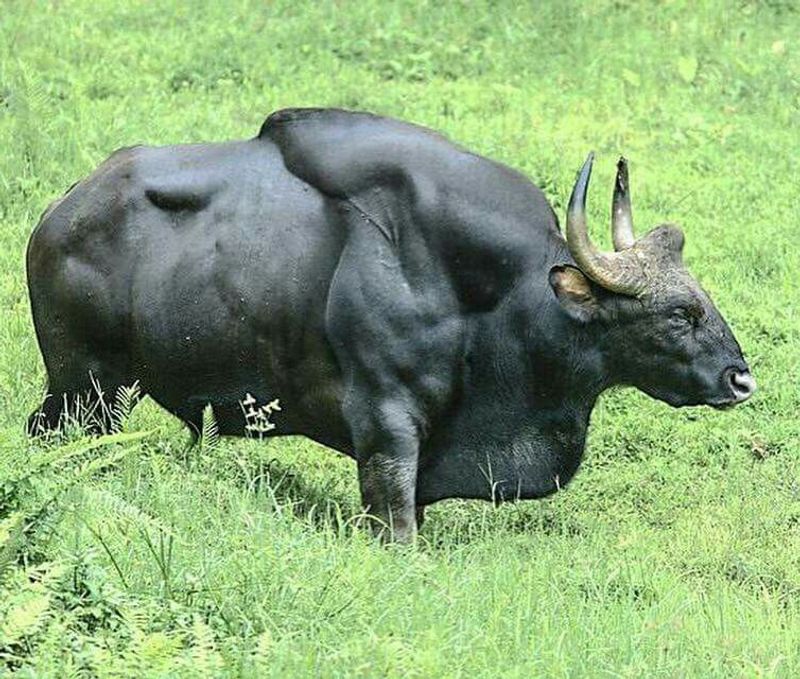
The Gaur, also known as the Indian Bison, is the largest species of wild cattle, with males weighing up to 2,200 pounds. These imposing creatures inhabit forests and grasslands across South Asia, where they play a vital role in their ecosystems.
Their formidable size and strength deter most predators, allowing them to roam relatively unchallenged. The Gaur’s muscular build and striking appearance make them a symbol of strength and resilience in their natural habitat. Conservation efforts continue to protect these magnificent animals from habitat loss and poaching.
American Alligator
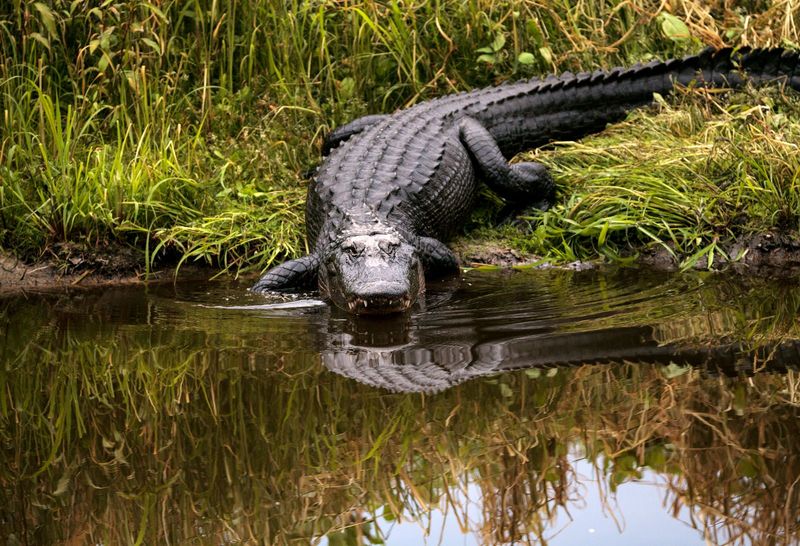
The American Alligator, a symbol of the southeastern United States, can grow up to 13 feet long and weigh over 1,000 pounds. These formidable reptiles are characterized by their armored bodies and powerful jaws.
Alligators are apex predators in their habitats, playing a critical role in maintaining ecological balance by controlling prey populations. They are primarily found in freshwater environments, where their stealth and strength make them effective hunters. The American Alligator’s presence in the wild is a testament to the resilience of ancient species in modern ecosystems.
Polar Bear
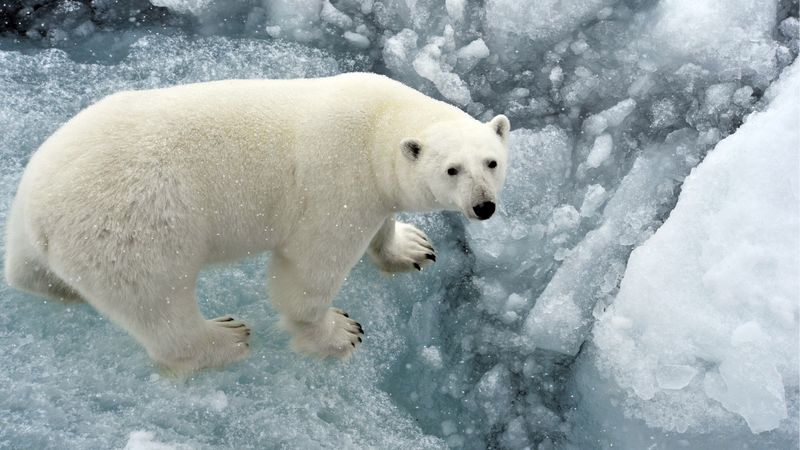
Polar Bears are the largest carnivorous land mammals, with males weighing up to 1,500 pounds. Native to the Arctic, they are adapted to cold environments with their thick fur and a layer of blubber.
These bears are excellent swimmers, capable of covering large distances in search of food. Their primary diet consists of seals, which they hunt on the sea ice. Polar Bears are iconic symbols of the Arctic, embodying the challenges and beauty of life in one of the planet’s harshest climates. Their survival is increasingly threatened by climate change.
Giant Pacific Octopus
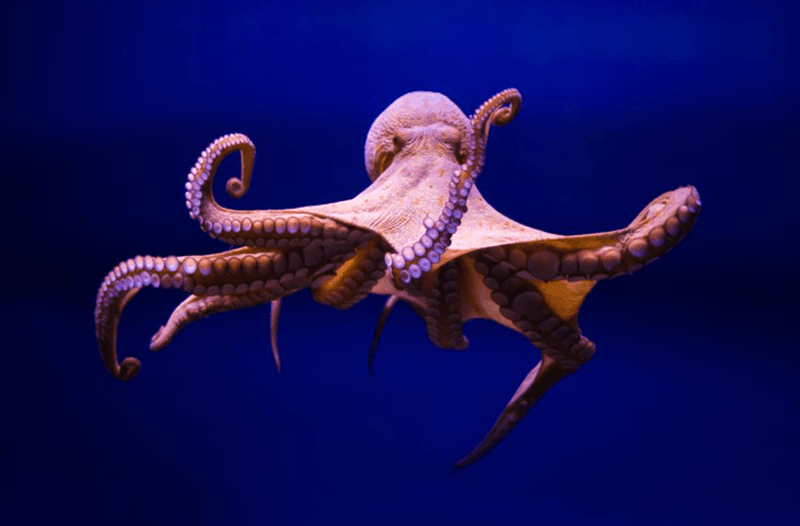
The Giant Pacific Octopus is renowned for its intelligence and adaptability, with arm spans reaching up to 16 feet. Found in the coastal waters of the North Pacific, these cephalopods are masters of disguise, capable of changing color and texture.
Their eight arms are lined with powerful suckers, allowing them to explore and manipulate their environment with dexterity. The Giant Pacific Octopus is a testament to the wonders of marine life, showcasing the complexity and intrigue of ocean ecosystems. Their ability to navigate and thrive in diverse habitats is truly awe-inspiring.
King Cobra
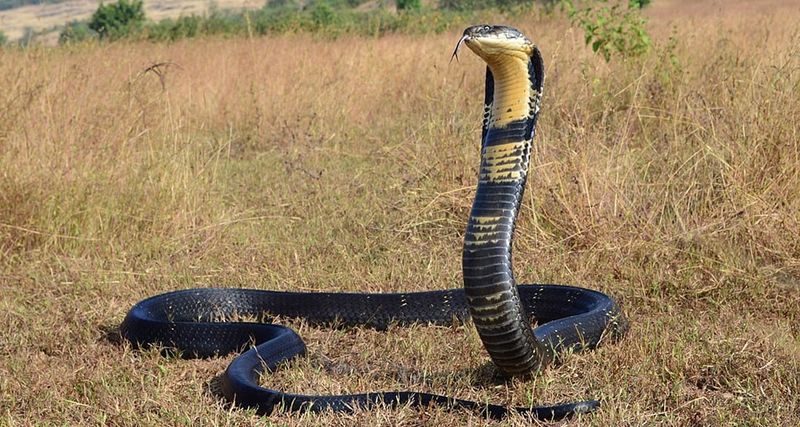
The King Cobra is the world’s longest venomous snake, growing up to 18 feet in length. Found in the forests of Southeast Asia, this formidable reptile commands both fear and respect.
Despite their fearsome reputation, King Cobras are shy and prefer to avoid confrontation. Their diet primarily consists of other snakes, showcasing their role as apex predators. The King Cobra’s presence is vital to controlling prey populations, maintaining ecological balance. Their impressive size and potent venom make them one of the most iconic snakes in the world.
Capybara
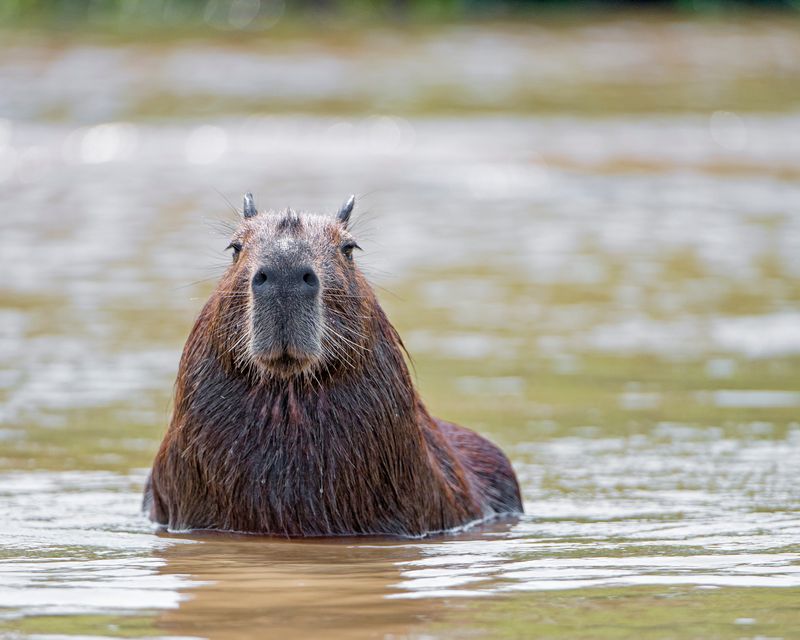
The Capybara, the world’s largest rodent, can weigh up to 150 pounds and is native to South America’s wetlands. These social animals are often found lounging near water, as they are excellent swimmers.
Capybaras live in groups and communicate with a variety of vocalizations. Their gentle demeanor and social nature make them an interesting study in animal behavior. The Capybara’s role in its ecosystem is crucial, as they help maintain the health of vegetation and provide prey for larger predators. Their laid-back lifestyle and unique characteristics endear them to many.

